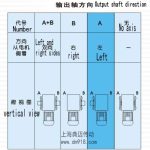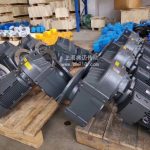Gear reducers, as an important part in the field of mechanical transmission, the core of their working principle lies in achieving the reduction of rotational speed, the increase of torque, and the reduction of inertia.
The gear reducer achieves the goal of speed reduction through the mutual transmission of gears at all levels. It is constructed by gear pairs at all levels. For example, using a small gear to drive a large gear can achieve a certain degree of speed reduction. If a multi-stage structure of this kind is adopted, the rotational speed can be significantly reduced.
Usually, gear reducers are applied in transmission equipment with low rotational speed and high torque. It transmits the power of electric motors, internal combustion engines, or other high-speed running power sources. Through the meshing of the gear with fewer teeth on the input shaft of the reducer and the large gear on the output shaft, the purpose of speed reduction is achieved. Ordinary reducers often achieve the desired speed reduction effect through several pairs of gears following the same principle. Among them, the ratio of the number of teeth of the large and small gears is the transmission ratio.
A gear reducer is essentially a power transmission mechanism. With the help of the gear speed converter, it reduces the rotation speed of the motor to the required rotation speed and obtains a larger torque. During the speed reduction process, not only can the output torque be increased, the torque output ratio is calculated by multiplying the motor output by the reduction ratio, but it should be noted that the rated torque of the reducer must not be exceeded. At the same time, the speed reduction also reduces the inertia of the load. The reduction in inertia is the square of the reduction ratio. Generally, motors have specific inertia values.
There are many types of reducers. Common ones include helical gear reducers (covering parallel shaft helical gear reducers, worm gear reducers, bevel gear reducers, etc.), planetary gear reducers, cycloidal pinwheel reducers, worm and worm gear reducers, planetary friction mechanical stepless speed variators, etc.
At present, the planetary gear reducer is a reducer with relatively excellent performance. Its transmission mechanism is gears. The servo motor drives the sun gear of the reducer. The sun gear drives the planetary gears supported on the planetary carrier. The planetary gears drive the output shaft connected to the outer ring gear through meshing transmission with the outer ring gear, thereby achieving speed reduction. The reduction ratio is closely related to the specification of the gear train.
In conclusion, understanding the working principle of gear reducers is of great significance for the correct selection and use of reducers and for improving the performance and efficiency of mechanical systems.



